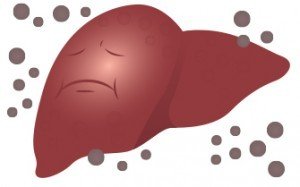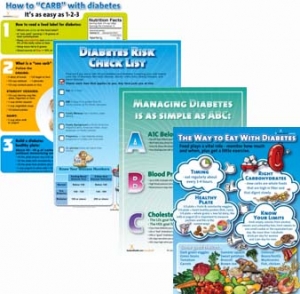A Closer Look at Hemochromatosis
There are 3 types of hemochromatosis. Primary hemochromatosis is also called hereditary hemochromatosis, and it is the most common form of hemochromatosis. Caused by an inherited gene defect, primary hemochromatosis is generally associated with the mutation of the HFE gene, which regulates iron absorption. HFE generally mutates in one of two ways, creating mutations called H63D (less common) or C282Y (more common).The National Institute of Diabetes and Digestive and Kidney Diseases (NIDDK) explains, "People inherit two copies of the HFE gene—one copy from each parent. Most people who inherit two copies of the HFE gene with the C282Y defect will have higher-than-average iron absorption. However, not all of these people will develop health problems associated with hemochromatosis. [...] People who inherit two H63D defects or one C282Y and one H63D defect may have higher-than-average iron absorption. However, they are unlikely to develop iron overload and organ damage."Although most people who develop hemochromatosis will do so in middle age, some people can develop juvenile hemochromatosis, a subset of primary hemochromatosis. This condition is associated with mutations in the hemojuvelin or hepcidin genes and can prompt severe iron overload and organ damage between the ages of 15 and 30.
Primary hemochromatosis is also called hereditary hemochromatosis, and it is the most common form of hemochromatosis. Caused by an inherited gene defect, primary hemochromatosis is generally associated with the mutation of the HFE gene, which regulates iron absorption. HFE generally mutates in one of two ways, creating mutations called H63D (less common) or C282Y (more common).The National Institute of Diabetes and Digestive and Kidney Diseases (NIDDK) explains, "People inherit two copies of the HFE gene—one copy from each parent. Most people who inherit two copies of the HFE gene with the C282Y defect will have higher-than-average iron absorption. However, not all of these people will develop health problems associated with hemochromatosis. [...] People who inherit two H63D defects or one C282Y and one H63D defect may have higher-than-average iron absorption. However, they are unlikely to develop iron overload and organ damage."Although most people who develop hemochromatosis will do so in middle age, some people can develop juvenile hemochromatosis, a subset of primary hemochromatosis. This condition is associated with mutations in the hemojuvelin or hepcidin genes and can prompt severe iron overload and organ damage between the ages of 15 and 30. Secondary hemochromatosis, on the other hand, refers to any instances of hemochromatosis that are not inherited. Generally this affects people with anemia who are receiving regular blood transfusions. It can also be prompted by liver disease or thalassemia.The third type of hemochromatosis, neonatal hemochromatosis, was once considered a variation of primary hemochromatosis. According to the NIDDK, Neonatal hemochromatosis is "a rare disease characterized by liver failure and death in fetuses and newborns. Researchers are studying the causes of neonatal hemochromatosis and believe more than one factor may lead to the disease."In this case, neonatal hemochromatosis "is now regarded as an alloimmune disease and is, as such, often referred to as gestational alloimmune liver disease. Antenatal treatment with intravenous immunoglobulins starting at 14-weeks’ gestation has been shown to prevent the development of NH in subsequent pregnancies" (source).References:
Secondary hemochromatosis, on the other hand, refers to any instances of hemochromatosis that are not inherited. Generally this affects people with anemia who are receiving regular blood transfusions. It can also be prompted by liver disease or thalassemia.The third type of hemochromatosis, neonatal hemochromatosis, was once considered a variation of primary hemochromatosis. According to the NIDDK, Neonatal hemochromatosis is "a rare disease characterized by liver failure and death in fetuses and newborns. Researchers are studying the causes of neonatal hemochromatosis and believe more than one factor may lead to the disease."In this case, neonatal hemochromatosis "is now regarded as an alloimmune disease and is, as such, often referred to as gestational alloimmune liver disease. Antenatal treatment with intravenous immunoglobulins starting at 14-weeks’ gestation has been shown to prevent the development of NH in subsequent pregnancies" (source).References:
- Hemochromatosis from the National Institute of Diabetes and Digestive and Kidney Diseases
- Hemochromatosis: Also Called Iron Overload Disease from the U.S. National Library of Medicine, a service of the National Institutes of Health
- Neonatal Hemochromatosis: Management, Outcome, and Prevention from the National Center for Biotechnology Information
Heeeeeeeeeeeeeere's a handout! Help your clients learn about the 3 types of hemochromatosis and where they can go for even more information... We're here to help you look your very best, right now! Check out these other health resources in the Nutrition Education Store...
We're here to help you look your very best, right now! Check out these other health resources in the Nutrition Education Store...





